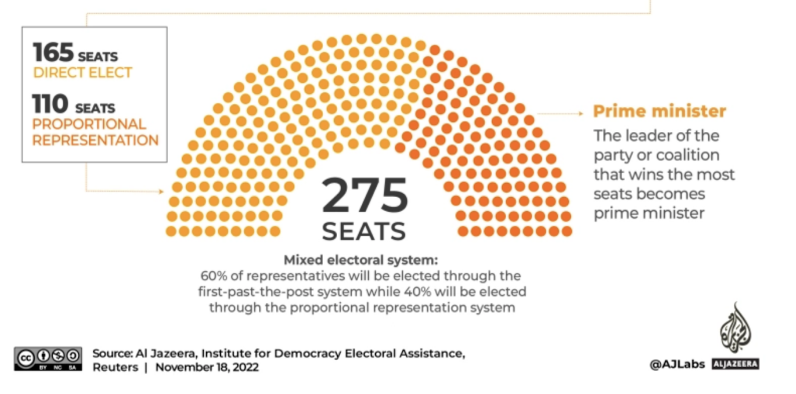Nepal Holds General Elections Amidst Growing Political Discontent
Nepalese election commission conducts workshops to teach prospective voters how to cast their ballot ahead of the elections Photo: AP
Nepal held its eighth general election on Nov. 20, with 275 parliamentary and 550 provincial seats hanging in the balance. The recent polls have brought the day-to-day economic hardships and concern about political stability plaguing most Nepalese to the forefront. The elections will also play an integral role in shaping South Asian politics as India and China contend to increase their sphere of influence in the Himalayan nation.
While proceedings on election day took place relatively peacefully, there were instances of violence reported in the weeks leading up to the polls. This, along with the widespread political disillusionment, may have dampened voter turnout, pegged at a disappointing 60%.
The elections on Sunday were held following Nepal's unique electoral system formulated in the 2015 Constitution, which has designated seats for both the “first past the post” system, and proportional representation. The new constitution also reserves 33% of its total constituencies for women and has castes and religion-based quotas in the seats tabulated through proportional representation.
Each voter casts two votes, one for the candidate of their choice who is directly elected and another for the party of their choice whose seats are allotted in proportion to their votes. Source: Al Jazeera
However, the 2015 Constitution has become an electoral issue in and of itself, with several parties promising to bring sweeping reforms to the existing system if elected to power. The Rashtriya Prajatantra Party (RPP), for instance, supports the reinduction of the monarchy while other parties have proposed alternate voting systems.
However, for most of Nepal’s population, the burning issue continues to be inflation, which has hit an all-time high of 8%, particularly impactful for more than 20% of the Nepalese population that lives below the poverty line. To make matters worse, tourism, which comprises a substantial share of Nepal’s GDP, has yet to reach pre-pandemic levels, denting employment rates across the country.
The two competing alliances, the incumbent Nepali Congress (NC) partnered with the Communist Party of Nepal-Maoist Center, and the Communist Party of Nepal-Unified Marxist Leninist (UML) allied with the Rashtriya Prajatantra Party (RPP) have both made hefty promises on this front. While the Nepali Congress has promised to add 250,000 jobs to the market annually, the UML has been canvassing under the catchphrase “Make in Nepal” and has promised to reform public sector industries. However, the parties' manifestos have been met with overwhelming skepticism in light of their previous track records.
Another reason for simmering discontent stems from the unnatural alliances drawn between parties which Nepalis believe will be a source of more political instability in the future. The rift in the alliance between the UML, led by former Prime Minister and UML party leader, KP Sharma Oli, and the Maoist party in 2020, resulted in the dissolution of parliament twice, shaking the political system. This time around, the Maoist party, which is now fighting with Nepali Congress, differs on key political matters including foreign policy and voting systems, casting doubt on the alliance’s longevity.
Two major international stakeholders, India and China, are also keenly awaiting the results, which will have immense repercussions for their foreign policy. Former PM Oli has taken an increasingly aggressive stand with New Delhi in his campaign, promising to annex three cities from India including Kalapani, Lipulekh, and Limpiyadhura. During Oli’s presidency, Nepal also became a part of China’s Belt and Road initiative.
Sher Bahadur Deuba, the incumbent Prime Minister and leader of the Nepali Congress, on the other hand, has been projecting a more diplomatic front. His proximity to Washington, evident from his attempt to back the controversial Millennium Challenge Corporation, and his vocal support for Ukraine, has strained his ties with Beijing, making him a de facto ally for New Delhi.
While the final tally will be announced on Dec. 8, most psephologists predict that Nepal may be headed for yet another hung parliament, providing Deuba with an advantage.


